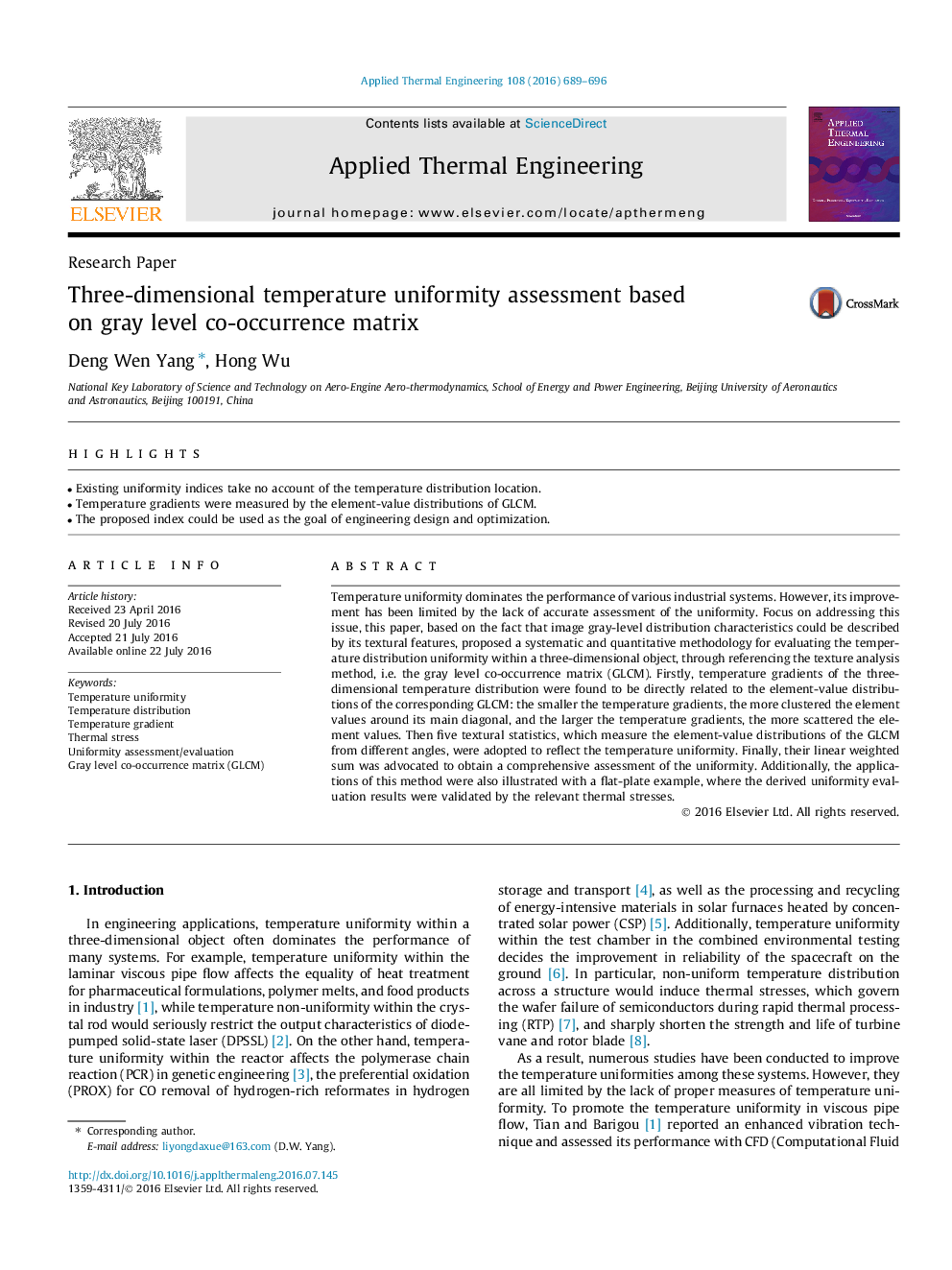| Article ID | Journal | Published Year | Pages | File Type |
|---|---|---|---|---|
| 7046840 | Applied Thermal Engineering | 2016 | 8 Pages |
Abstract
Temperature uniformity dominates the performance of various industrial systems. However, its improvement has been limited by the lack of accurate assessment of the uniformity. Focus on addressing this issue, this paper, based on the fact that image gray-level distribution characteristics could be described by its textural features, proposed a systematic and quantitative methodology for evaluating the temperature distribution uniformity within a three-dimensional object, through referencing the texture analysis method, i.e. the gray level co-occurrence matrix (GLCM). Firstly, temperature gradients of the three-dimensional temperature distribution were found to be directly related to the element-value distributions of the corresponding GLCM: the smaller the temperature gradients, the more clustered the element values around its main diagonal, and the larger the temperature gradients, the more scattered the element values. Then five textural statistics, which measure the element-value distributions of the GLCM from different angles, were adopted to reflect the temperature uniformity. Finally, their linear weighted sum was advocated to obtain a comprehensive assessment of the uniformity. Additionally, the applications of this method were also illustrated with a flat-plate example, where the derived uniformity evaluation results were validated by the relevant thermal stresses.
Related Topics
Physical Sciences and Engineering
Chemical Engineering
Fluid Flow and Transfer Processes
Authors
Deng Wen Yang, Hong Wu,
